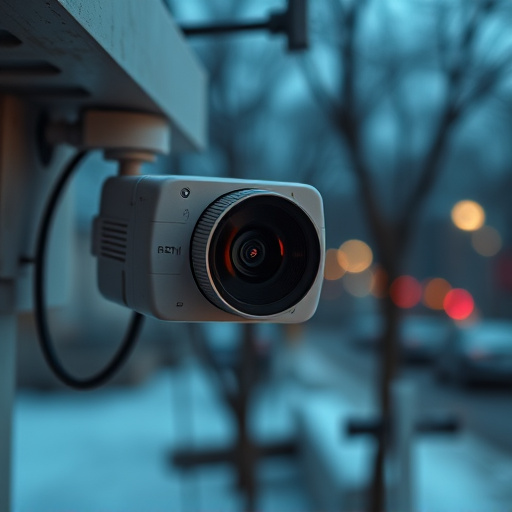Battery-operated nanny cam systems, favored for their convenience and reliability, offer HD video, motion detection, wireless range, and two-way audio. Selection tips include considering video quality, connectivity, and communication features. Detection methods involve RF detectors, thermal imaging, and examining power sources for hidden wiring. Staying ahead requires knowledge of signal patterns, using jammers, and updating security measures. Legal considerations and regional regulations are crucial for responsible use, ensuring privacy and transparency with these surveillance systems.
Uncover the secrets behind hidden monitoring devices with our comprehensive guide. In an era where privacy is paramount, understanding how to detect battery-operated nanny cam systems is crucial. This article delves into the intricate world of signal detection, offering a detailed overview of advanced techniques to identify these covert devices. From recognizing subtle signals to staying ahead through countermeasures, we explore legal and ethical considerations as well, ensuring you’re informed in this complex landscape.
- Understanding Battery-Operated Nanny Cam Systems: A Comprehensive Overview
- Identifying Hidden Monitoring Device Signals: Advanced Techniques
- Countering Signal Detection: Tips to Stay One Step Ahead
- Legal and Ethical Considerations: Navigating the Complexities of Surveillance
Understanding Battery-Operated Nanny Cam Systems: A Comprehensive Overview
Battery-operated nanny cam systems have become increasingly popular as a means of ensuring safety and peace of mind for parents and caregivers. These compact, wireless cameras are designed to be easily installed and operate independently using rechargeable batteries, making them versatile options for monitoring children or vulnerable adults in various settings, from homes to care facilities. Understanding the unique features and functionality of these systems is essential for effective use and detection.
When selecting a battery-operated nanny cam, consider factors like video quality (HD resolution ensures clearer images), motion detection capabilities (saves power and alerts you when activity occurs), and wireless range (ensures reliable connectivity without messy cables). Additionally, some models offer two-way audio, allowing for communication with those being monitored. This comprehensive overview highlights the key aspects to look for in choosing a battery-operated nanny cam system that best suits your monitoring needs.
Identifying Hidden Monitoring Device Signals: Advanced Techniques
Hidden monitoring device signals, especially from battery-operated nanny cam systems, can be hard to detect due to their sophisticated design and covert operation. To identify these devices, start by scanning for unusual electromagnetic emissions using specialized equipment like RF (radio frequency) detectors or signal analyzers. These tools can pick up on the subtle radio signals that many hidden cameras emit.
Additionally, look for small, discreet cameras in common hiding spots like corners, behind furniture, or under surfaces. Battery-operated systems often rely on non-intrusive power sources, so examining power outlets and battery compartments for any unusual activity or hidden wiring can provide valuable clues. Advanced techniques include thermal imaging to detect heat signatures of devices and infrared (IR) sensors that can reveal optical or IR signals not visible to the naked eye.
Countering Signal Detection: Tips to Stay One Step Ahead
In the quest to stay ahead of hidden monitoring devices, especially battery-operated nanny cam systems designed for covert surveillance, awareness is key. One effective strategy involves being mindful of potential signals and their characteristics. These devices often emit specific frequency ranges or use unique protocols, so educating yourself on these technical aspects can be a powerful defense mechanism. By understanding the typical signal patterns, you can develop an intuition to spot anomalies, raising red flags for further investigation.
Additionally, employing counter-surveillance techniques like using signal jammers or frequency disruptors designed to interfere with such devices is another proactive approach. These tools can create temporary blind spots for hidden cameras, providing a window of opportunity to detect and remove them. Regularly updating security measures and staying informed about the latest surveillance technology will ensure you remain one step ahead in protecting your privacy.
Legal and Ethical Considerations: Navigating the Complexities of Surveillance
In the realm of hidden monitoring device signal detection, it’s crucial to balance technological advancements with legal and ethical considerations. The use of battery-operated nanny cam systems, for instance, raises complex issues related to privacy and surveillance. As technology becomes more sophisticated, the line between protecting homes and families and invading personal privacy can blur, especially when devices are hidden and unacknowledged.
Navigating this complexity requires a nuanced understanding of local laws governing surveillance and consent. In many jurisdictions, capturing images or audio without explicit consent is illegal, with exceptions for public safety and security purposes. Ethical guidelines also dictate that the use of such devices should be transparent to avoid creating an atmosphere of mistrust and invade individuals’ reasonable expectations of privacy. Therefore, it’s essential to consult legal experts and stay informed about regional regulations when employing hidden monitoring systems like battery-operated nanny cams.
In conclusion, while battery-operated nanny cam systems offer valuable peace of mind, understanding their signals and employing countermeasures is essential. By familiarizing yourself with advanced detection techniques and staying informed about legal boundaries, you can ensure a safe, ethical, and private environment for your family. Stay vigilant, stay informed, and protect what matters most.
